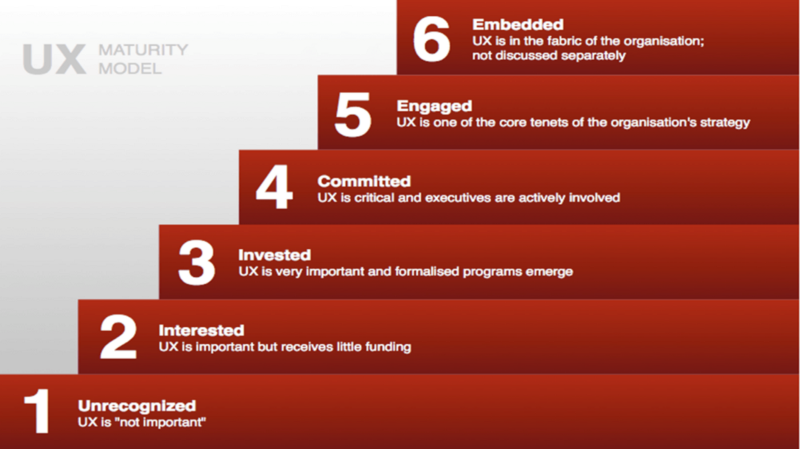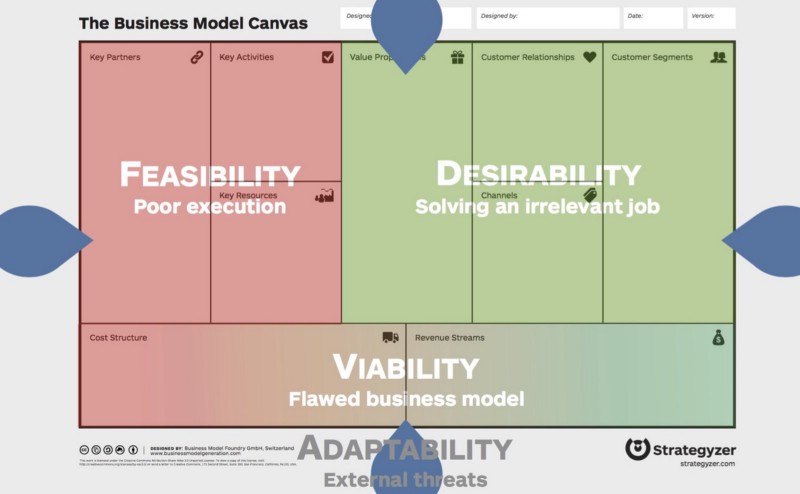UX Maturity vs Business Myopia

Some time ago, I was helping a colleague on presenting a review of what has been done during the year to a wide range of people in his company. The presentation went well (or so we thought) and we came to the part where he talked about the UX Maturity of the company. No surprises here: it was low in the scale. He showed how he thought his team could elevate the maturity of the company.
At some point, during the Q&A, one of the business representatives threw something like that:
“But design has to consider the business needs. Business needs should come first and then perhaps user needs.”
This started a debate amongst the audience on whether design should be able to influence business decisions or at which point the team should be included in the decision process.
We tried to argue that designers should ideally be involved as soon as the business had a problem or a question, thus well before they come with a solution: “we need feature X”. Even better, the design team should be able to challenge business decisions when they discover new insights during in-field research. Needless to say, it’s far from being the “default” here.
Our point was: your business needs should be aligned to the customers’ needs.
UX Maturity and Business Myopia
Interestingly, this discussion was right into the subject of UX Maturity. With my colleague, we found interesting to correlate the discrepancy between the so-called business needs and the understanding of the customers.

When a company’s maturity grow, more and more people start to use human-centric (or customer-centric) approaches at many more levels, switching an organization from an “inside-out” to an “outside-in” paradigm. As maturity grows, the business tends to align with the customers’ needs.
From my own experience, a company that opposes the two concepts usually is low in maturity scale. The discussion which started from this business representatives’ remark is the perfect illustration.
This discrepancy revealed how blind the business can be toward the value proposition and the experiences they deliver to the users. When a company is narcissistically looking at itself for answers — what I’m referring to as an “inside-out” paradigm — there is not so much space for doubts about the value of what is done: this is the business myopia.
Design, Value Proposition, and Business Models
Your customers’ needs and wants are what you are supposed to focus on. You, as a business, should have a Value Proposition that aims to answer one simple question: “what jobs are you helping your customers to get done?”. This should be a key element of your business model.

This means knowing your customers. And by knowing them, I mean conducting user research (in-field interviews, surveys, user tests, etc.) to properly understand their context, goals, struggles, and mental models. And to be clear, this should not be a one shot. Understanding your customers requires a constant effort.
This is probably where we can show the value of UX, by connecting the business and design on this critical understanding. Designers are good at building this understanding about the users, and they probably have to better at communicating this knowledge to non-designers.
Side note: Being a rational skeptic in the business world
Originally, rational skepticism comes from the scientific skepticism and is an agnostic approach to knowledge building. Skepticism could be otherwise defined as: “the right to doubt about everything”. This thought exercise is aimed to help ask the right questions about what we know (or not) and is part of the toolbox of the scientific method (like the Occam’s razor).
Pretty much like the scientific method aims to create models of knowledge to help us understand the world around us, being a rational skeptic in business, design or entrepreneurship is the idea of building an impartial model of understanding of your customers and your solutions. In such a paradigm, you build a hypothesis (an idea or a solution) and you test it to fail (and not to success). The more your hypothesis passes the tests, the more you become confident that it is viable. You can then build several hypotheses for the same “problem”, test them in parallel and pick the “best” one.
Interestingly, this is what the Business Model Canvas is about. Recently, Alex Osterwalder has talked about the importance of having a portfolio of several hypotheses that you regularly test.
Conclusion
Of course, business is complex and it’s easy to take a step back and say we should have done things otherwise. And sometimes there are business needs that do not depend on answering customers needs, especially in highly regulated markets (i.e. banks).
However, using human-centric approach can help implement such requirements in respect of the customers’ context, goals, and needs, so that it does not create avoidable frictions in their experience.
Furthermore, human-centric thinking is a holistic approach to business and product management. It helps gain alignment between business, technologies, and design by focusing on people’s needs and by defining key metrics. Combined with great tools such as the Business Model Canvas, the Blue Ocean Strategy, Jobs To Be Done, Design Thinking (and many more), you increase probabilities of growth and success and you reduce chances to build something that nobody wants.
Good design is good business. — Thomas J. Watson Jr., IBM
Thanks for reading!
Like what you just read?
Give some claps 👏👏👏👏👏👏 and hit the follow button!












Discussion